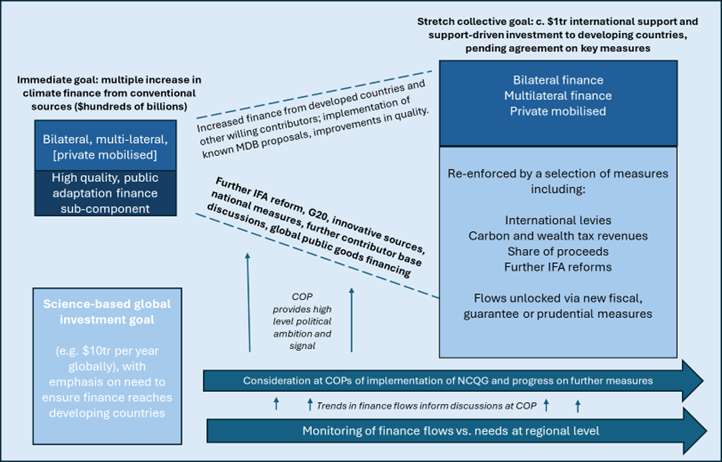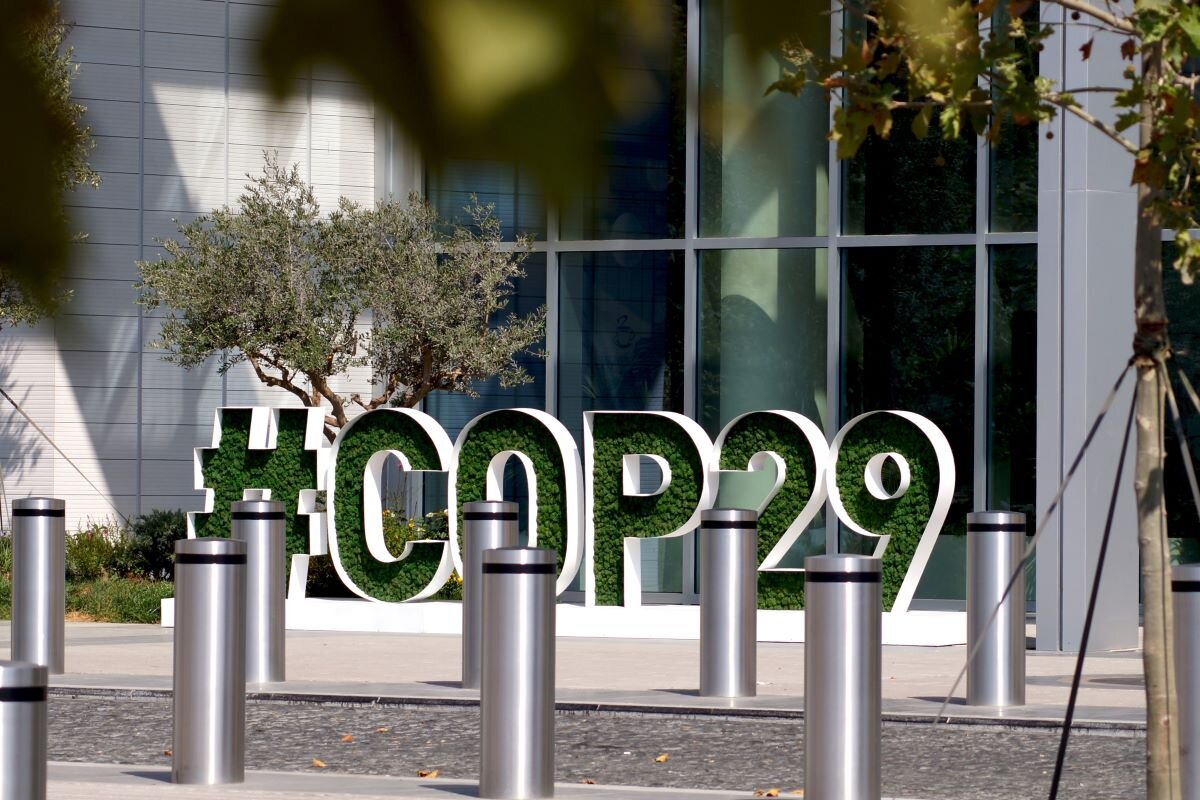On the eve of COP29, this briefing proposes solutions to the most critical issues facing governments in setting a new global goal on climate finance in a challenging geopolitical and economic context. Taken together, these proposals provide the building blocks for a goal which maintains trust in the international process, account for and reinforce the International Financial Architecture (IFA) Reform agenda, and foster a positive feedback loop with global climate ambition. Central to this is the need for the goal to navigate a pathway between where we are now and where we need to be if developing country needs are to be met.
Summary
Climate finance is at the heart of collective commitment to climate action. Financing needs are vast – by any estimation in the trillions per year. Analysis suggests that even with strong scaling of domestic financing, at least $1 trillion will need to be delivered to developing countries annually – not including China – through international finance by 2030. The agreement of a New Collective Quantified Goal (NCQG) on climate finance to replace the existing $100bn goal will be the focus of negotiations at COP29. Agreeing it will be key to maintaining trust in the Paris Agreement ahead of Nationally Determined Contribution (NDC) submissions next year, in the context of challenging geo-politics and a difficult economic outlook for many countries.
The gulf between the needs of developing countries and the availability of international support to meet those needs is vast. Mobilisation of finance at the scale needed, at affordable costs and with availability to all countries and types of actions will require deep reforms across the whole of the international financial system, but there is no pathway to a just and equitable transition that doesn’t see a major increase in international support.
Ambitious implementation of current G20 proposals to boost international financial institutions (backed up by tens of billions in new capital) and a sustained increase in bilateral funding could see a near tripling in climate finance by the early 2030s – a major improvement on where we are now, but still a long way from the c.$1tn per year in international finance needed.
Bridging the gap between where we are now and where we need to be will require significant shifts in positions countries have put forward in the UNFCCC, G20 and elsewhere. The necessary changes will require collective action outside the UNFCCC, including through deeper systemic reform to the development and financial sector; the unlocking of innovative sources of finance at scale which have previously been rejected by major economies; and a greater political willingness to raise and allocate finance for international climate purposes.
Not all of these decisions will be made at COP29 and countries will be nervous about fully committing to a goal predicated on delivery mechanisms that they do not control. But the negotiations on the NCQG provide an opportunity to make a partial step towards them, while putting in place a process to drive necessary reforms in the real world – much as the Paris Agreement already does for mitigation commitments. This briefing sets out a model for the NCQG that would allow countries to ‘lock in’ the ambition that is achievable now as they work to more fully respond to developing country needs. This includes:
- Developed countries (and other countries willing to commit to providing support) committing to a step change in international support and the implementation of measures to increase the scale and effectiveness of the international development finance system. This would reflect a concrete goal in the hundreds of billions per year. This should be combined with a defined goal to increase quality public finance for adaptation, enhancing the existing goal to double public adaptation finance agreed at COP26.
- Acknowledgement that this alone is not enough and that other support measures – many of which require multilateral agreement outside the UNFCCC – are needed to reach $1tn in international finance to developing countries, and to ensure the UNFCCC is able to both account for and emphasise the need for those solutions to be implemented. This would entail a stretch goal in the region of $1tn, led by developed countries but with a recognised need for collective action, and an acknowledgement that failure to achieve these solutions would require further discussions within the UNFCCC in future years.
This dynamic process for driving finance reform would need to be combined with a compromise solution on the contributor and recipient base and underpinned by a range of technical agreements to improve transparency and access.
This would be further enhanced by monitoring overall global investment flows against a science-based assessment of needs, which would pay particular attention to financing trends at a regional level to ensure overall financing levels in developing countries were increasing. Such an ‘outer layer’ would allow countries to better understand where support was most needed.
The proposals outlined in this briefing – summarised in the figure below – would maximise current commitments on quantity, quality and distribution of finance while allowing a positive feedback loop between the NCQG, global climate ambition and the wider agenda of IFA reform.
Read the full briefing



